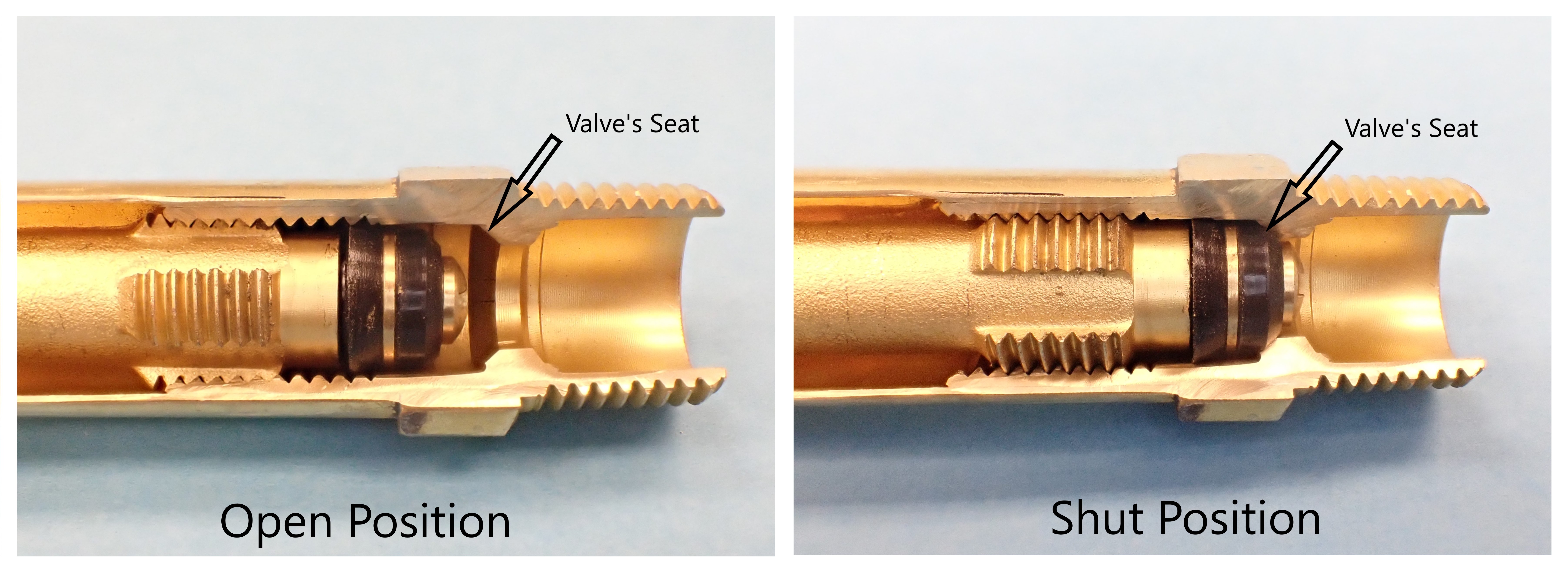Freezing a Frost-Free Outdoor Faucet
A few weeks back, I was talking to a friend about an outdoor faucet rupture that flooded the lower level of his new home. As I suspected, he had left his garden hose attached during sub-freezing temperatures. I’ve seen this happen multiple times over the last couple of years, almost to the point that it seems like it should be common knowledge that it is a bad idea. However, this friend is a mechanical engineer with a background in general construction. If any homeowner should have known this can happen, it was him. Thus, perhaps this knowledge isn’t as well communicated as it should be. Let’s fix this problem.
To my friend’s credit, he had considered removing the hose, but had made the decision to leave it attached as the outdoor faucet was freeze rated (frost-free) and therefore couldn’t freeze…right? Unfortunately, this isn’t the case. So, what happened? To best understand the problem let’s look at a cutaway I made of a frost-free valve.
Figure 1 (Overview)
As you can see, the design is somewhat simple. In addition to the items visible on the outside of a typical residence (handle, hose attachment location, and siphon break), the body of the outdoor faucet includes a long neck and a shaft (valve’s stem) that extends the length of the neck. The valve’s stem is connected to the handle on one end and the valve’s seat on the other end. When the valve’s handle is rotated in the shut direction, threading at the base of the valve’s stem pushes the valve’s seat shut. This secures the water supply to the outdoor faucet deep within the heated envelope of the structure. The water downstream of the valve’s seat then drains out leaving an empty cavity that is “frost-free”.

Figure 2 (Valve Seat Open/Shut)
Unfortunately, this design can be defeated if something is left attached to the outdoor faucet. Common items include a hose, a Y-adapter with both ports in the shut position, and automatic watering devices with solenoid valves that are normally shut. Essentially, anything left attached, even if the outdoor faucet is in the shut position, can prevent the outdoor faucet from draining. If the outdoor faucet doesn’t drain, then the remaining water can freeze. The area with the greatest heat loss, often near the hose attachment location, will freeze first creating an ice plug. This ice plug is effectively a freeze seal. Due to the expansion of water as it freezes, subsequent ice growth will result in an exponential increase in water pressure between this ice plug and the base of the outdoor faucet. Material stress will rise and eventually a fracture will result.
When Will A Fracture Present Itself?
If the outdoor faucet was left in the open position (pressurized), then the rupture will begin issuing water into the wall cavity as soon as temperatures increase enough to melt the ice. If the outdoor faucet was placed in the shut position (depressurized), then water will begin issuing in the spring when the handle is first rotated to the open position. If the user is lucky, they might hear or see water flowing out from behind the siding or interior wall right away. If they’re unlucky, it could take hours or even days before they realize that water has been discharging from the fracture located within the wall cavity. In either case, this can cause quite a mess.
Still Have Something Attached to Your Outdoor faucet?
If you live in an area with winter weather and you or a friend still have anything attached to an outdoor faucet, aside from an insulating cover, please remove it. If you have already experienced freezing temperatures, consider having your outdoor faucet checked for fractures before you use it in the spring. Oh, and don’t be too hard on yourself if you did leave something attached. Experience shows that unless you or someone you know has dealt with this firsthand, it seems intuitive that it shouldn’t be a problem. Good luck and spread the word to your friends and family. After all, knowledge is power.

